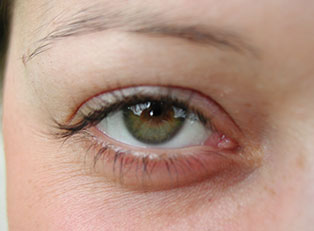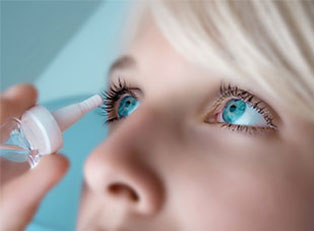Conjunctivitis is an infectious eye condition that affects the moist tissues and fluids that surround the eyeball and the inner eyelid. When you get conjunctivitis, it means there is inflammation of blood vessels in the conjunctiva of your eye. The conjunctiva becomes inflamed as a result infection. This eye condition affects both adults and children alike. There are several different types of conjunctivitis including allergic conjunctivitis, viral conjunctivitis, and bacterial conjunctivitis. Whether the condition is allergic, viral or bacterial, this eye condition does not affect the inner structures of the eye and therefore does damage vision.
Allergic Conjunctivitis
Allergic conjunctivitis is caused by irritants such as chlorine, shampoo and various allergies. It is also associated with intolerance to cosmetics or perfumes. Allergic conjunctivitis can also be caused by allergens including animal dander, pollen and dust mites. Symptoms include eye irritation, mucus in the eye, and red and itchy eyes.
There are several treatments for allergic conjunctivitis. Depending on the severity of the symptoms or conditions, different eye drops may be recommended or prescribed. Eye drops with antihistamines are used to prevent itching. Anti-inflammatory and steroidal eye drops may be recommended by a doctor, to help reduce any swelling caused by the conjunctivitis. Decongestants can be prescribed by the doctor, to also help with swelling and itching.
Viral Conjunctivitis
This type of conjunctivitis is associated with the common cold and can be accompanied by sinus congestion, runny nose and other symptoms. Viral conjunctivitis is highly contagious. It is common elsewhere, and transmission usually occurs in public places, between families, at the office, malls, and within schools. Symptoms of viral conjunctivitis include red and itchy eyes, eye discharge, watery eyes, sore throat, and upper respiratory problems that mimic the common cold.
There are different types of medications for treating viral conjunctivitis, and they include artificial tears, oral acyclovir, vasoconstrictor and antihistamines, and topical steroids. Eye drops can be used to reduce the symptoms. Decongestants area treatment option to reduce swelling. Another treatment option is the use of antihistamine drops, which reduces the itching symptom. The eye drops can be used for one to two weeks, depending on the severity of the symptoms. Also, vasoconstrictors are available and are used to whiten the eye. To ease the discomfort associated with viral conjunctivitis apply a warm compress to the infected eye. However, if you are treating the swelling, use a cold compress.
Bacterial Conjunctivitis
Bacterial conjunctivitis is caused by bacterial infection. The can spread through contact with an infected person, exposure to contaminated surfaces or even through other means such as ear or sinus infections. Bacterial conjunctivitis has a thick and greenish discharge. It often makes it difficult to open the eye in the morning due to crusting that has formed overnight.
Bacterial conjunctivitis is usually treated with antibiotics. The medication may be prescribed in the form of eye ointment or drops. Eye drops clear up the infection within a few days. Some people prefer ointments since they are easier to use than eye drops. Ointments can clear up the infection within a few days. It is advisable to use the medicine as prescribed by the doctor, as this will help to reduce the chances of having a recurring infection.



